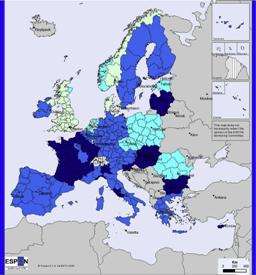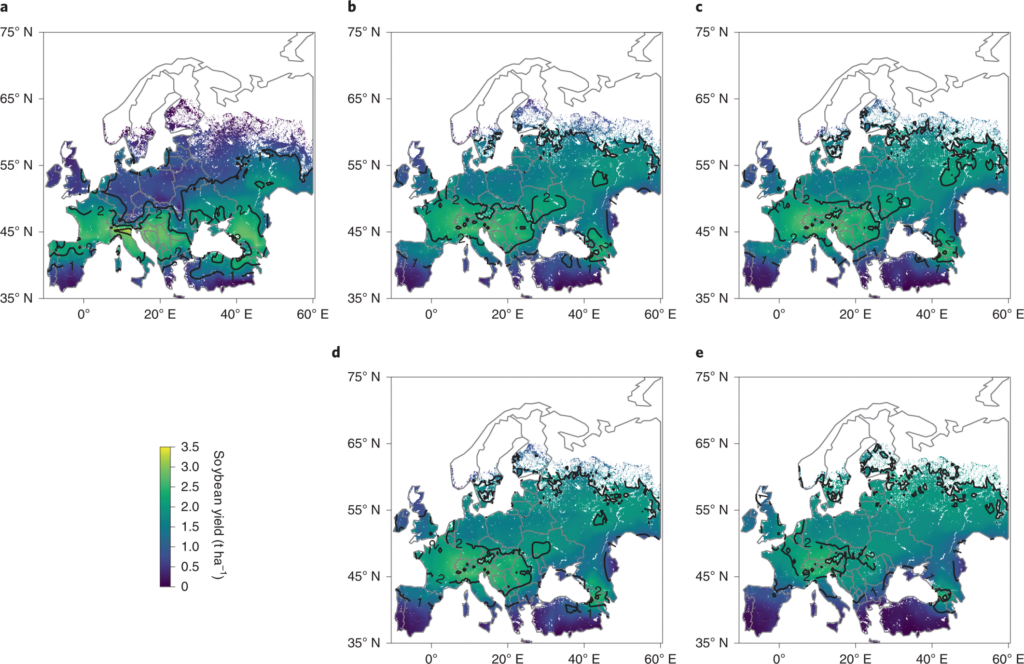In this article, we’ll be exploring Europe’s self-sufficiency and discussing how it relates to off-grid living. We’ll take a closer look at whether or not Europe is able to sustain itself without relying heavily on external resources. By the end of this article, you’ll gain a better understanding of the current state of self-sufficiency in Europe and its implications for off-grid living. So, let’s dive in and discover if Europe has what it takes to be truly self-sufficient.
Exploring Europe’s Self-sufficiency

Introduction to Europe’s self-sufficiency
Europe’s self-sufficiency refers to the region’s ability to meet its own needs and reduce dependence on external sources. In recent years, there has been a growing emphasis on achieving self-sufficiency in various sectors, including agriculture, renewable energy, healthcare, manufacturing, and technology. This article will explore the factors influencing Europe’s self-sufficiency, challenges faced in different sectors, and the implications of self-sufficiency for trade and globalization.
Factors influencing self-sufficiency in Europe
Several factors have a significant impact on Europe’s self-sufficiency. Geographical considerations play a crucial role as different regions have varying natural resources and climatic conditions. Additionally, economic factors such as availability of capital and labor, as well as political factors including government policies and regulations, also influence self-sufficiency. Furthermore, trade relations and agreements can either support or hinder self-sufficiency efforts.
Agricultural self-sufficiency in Europe
Agricultural self-sufficiency is vital for food security and reducing dependence on imported goods. Europe has a diverse agricultural landscape, with various countries specializing in different crops and livestock. Policies and initiatives have been implemented to support agricultural self-sufficiency, including subsidies, research and development programs, and sustainable farming practices.
Challenges in achieving agricultural self-sufficiency
Despite efforts towards agricultural self-sufficiency, Europe faces several challenges. Land availability and quality pose significant obstacles, as urbanization and industrialization continue to encroach on agricultural areas. Additionally, water resources and irrigation systems need to be managed effectively to ensure stable agricultural production. Climate change and extreme weather events also impact crop yields, while pest and disease management require constant attention. Furthermore, market dynamics and competition from global producers can affect the viability of agricultural self-sufficiency.

Efforts towards renewable energy self-sufficiency
As the demand for renewable energy grows, Europe has been making significant investments in this sector. The region has been focusing on developing renewable energy infrastructure, leveraging advancements in technology, and implementing supportive policies and incentives. Integration of diverse renewable energy sources, such as solar, wind, and hydropower, plays a vital role in achieving self-sufficiency in this domain.
Promoting sustainable transport for self-sufficiency
Transitioning to sustainable transport is crucial for reducing dependence on fossil fuels and achieving self-sufficiency in this sector. Europe has been expanding public transportation, encouraging the use of low-emission vehicles, and developing the necessary infrastructure to support eco-friendly transportation. Incentives and policies that promote sustainable travel further contribute to enhancing self-sufficiency in the transport sector.

Progress in achieving self-sufficient healthcare systems
Having self-sufficient healthcare systems ensures access to essential medical services and reduces dependence on imported pharmaceuticals and equipment. Europe has focused on developing its domestic pharmaceutical industry, promoting medical research and innovation, and investing in healthcare infrastructure and a skilled workforce. Government policies and funding also play a crucial role in supporting self-sufficiency in healthcare.
Role of education and innovation in self-sufficiency
Investments in education and research are key to fostering self-sufficiency in various sectors. Europe places importance on promoting entrepreneurship and start-ups, stimulating innovation in key industries, and fostering collaboration between academia and industry. Skills development and vocational training programs further contribute to nurturing a self-sufficient workforce.

Evaluating self-sufficiency in the manufacturing sector
The manufacturing sector is critical for Europe’s self-sufficiency, as it ensures the production of essential goods and reduces reliance on imported products. Europe has diverse manufacturing industries, and policies and government support have been crucial in ensuring their viability. Adequate infrastructure, skilled labor, and efficient supply chains are essential for achieving self-sufficiency in this domain.
Self-sufficiency in the IT and technological realm
Europe’s technological advancements play a significant role in achieving self-sufficiency. The region has emerged as a hub for technological innovation, with thriving start-up ecosystems and a focus on research and development. Investment in digital infrastructure, connectivity, and cybersecurity also contribute to Europe’s self-sufficiency in the IT and technological realm.
Exploring cultural self-sufficiency in Europe
Cultural self-sufficiency is important for preserving cultural heritage and supporting local artistic industries. Europe values its diverse cultural identities and has implemented policies to promote indigenous languages, preserve cultural heritage sites, and encourage cultural exchange and tourism. However, challenges such as globalization and homogenization pose threats to cultural self-sufficiency.
Implications of self-sufficiency for trade and globalization
Achieving self-sufficiency in Europe has implications for international trade and globalization. Balancing self-sufficiency with the need for international trade is crucial for economic growth. Self-sufficiency can impact global supply chains, trade agreements, and protectionist measures. Furthermore, self-sufficiency enhances resilience during crises, and collaboration and interdependence among nations remain essential for a sustainable future.
Prospects for future self-sufficiency in Europe
Europe’s journey towards self-sufficiency is an ongoing process with promising prospects for the future. By leveraging its strengths, capitalizing on technological advancements, and implementing effective policies and initiatives, Europe can continue to progress towards self-sufficiency. Collaboration, global cooperation, and balanced strategies will be key in shaping a self-sufficient Europe.
Conclusion
Europe’s self-sufficiency journey encompasses various sectors and requires attentive consideration of factors such as geography, climate, economics, and politics. Efforts towards achieving self-sufficiency in agriculture, renewable energy, healthcare, manufacturing, technology, and culture are crucial for the region’s stability and sustainability. A balanced approach that acknowledges the importance of collaboration and global cooperation will pave the way for a self-sufficient Europe, ensuring a brighter and more resilient future for the region.




